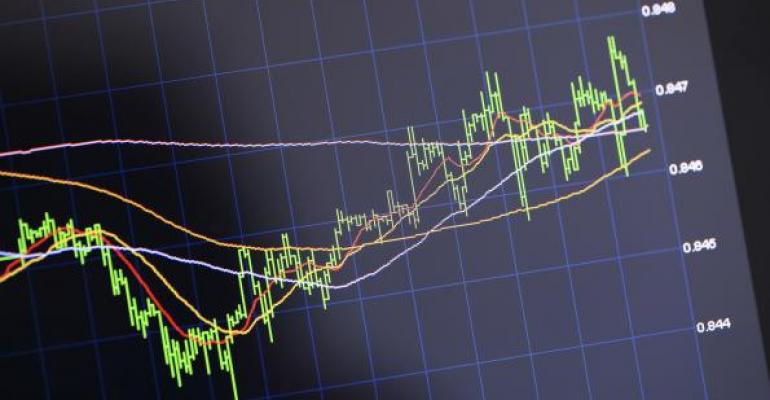In the darkest days of the Great Depression, Franklin Roosevelt’s first inaugural address exhorted the country to look unflinchingly toward recovery by saying “the only thing we have to fear is fear itself.”
We’re now in a very different place than 1933. Our stock market is exuberant. Fear, as measured by the well-known CBOE Volatility Index (VIX), has been downtrending to record lows since last year’s presidential election.
VIX is based on the real-time prices of options on the S&P 500 Index (SPX) and reflects investors’ expectations of equity market volatility over the ensuing 30 days. Historically, VIX is negatively correlated to the stock market, thereby earning its sobriquet as the “fear gauge.”
You can trace VIX’s downtrend as the black line in the chart below.

So what do investors have to worry about?
The red line in the chart above, that’s what. That line scribes the trajectory of the CBOE Skew Index (SKEW), another indicator derived from SPX option prices. SKEW tracks S&P 500 “tail risk”—outlier returns of two or more standard deviations below a normal distribution’s mean.
Huh?
Below you’ll see a normal return distribution—a classic bell-shaped curve—characterized by a bulge where about two-thirds of returns can be found within one standard deviation (Z-score) of the mean or average. “Tails” extend outward to the right (the positive direction) and to the left (the negative direction). Only 5 percent of returns are expected to fall beyond two standard deviations from the mean in a normal distribution.

SKEW’s price typically varies from 100 to 150 with 100 representing investors’ perception of a normal curve and negligible risk for outlying returns. When SKEW rises above 100, the left-hand tail of the distribution becomes “fatter” as the odds of outliers rises.
Now, go back to the first chart. As VIX has slipped lower, SKEW is rising. Over the past trading week, SKEW’s averaged 145.51.
Amid all the stock exuberance, there are also signs of topping in some key indicators, The SPY-OEF premiums stalled just below the $144 level forecast at the top of the year in “The New Year Charted For Stocks.” And the XLY/XLP ratio’s backed off its attempt at the historic 1.71 high outlined in “ETFs Gauge Consumer Confidence.”
And for those more fundamentally minded, there’s this from Nobel laureate economist Robert Schiller on the 30th anniversary of the 1987 market crash: “Oct. 19, 1987 was one of the worst days in stock market history. Thirty years later, it would be comforting to believe it couldn’t happen again. Yet that’s true only in the narrowest sense: Regulatory and technological change has made an exact repeat of that terrible day impossible. We are still at risk, however, because fundamentally, that market crash was a mass stampede set off through viral contagion. That kind of panic can certainly happen again.”
We’re less than a week away from Halloween. Let’s hope it doesn’t turn out to be a fearful time for stock investors.
Brad Zigler is WealthManagement’s Alternative Investments Editor. Previously, he was the head of Marketing, Research and Education for the Pacific Exchange’s (now NYSE Arca) option market and the iShares complex of exchange traded funds.





